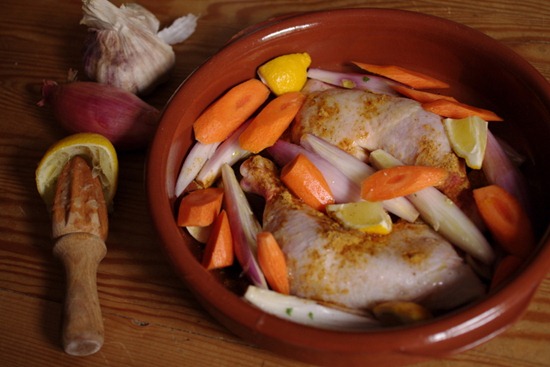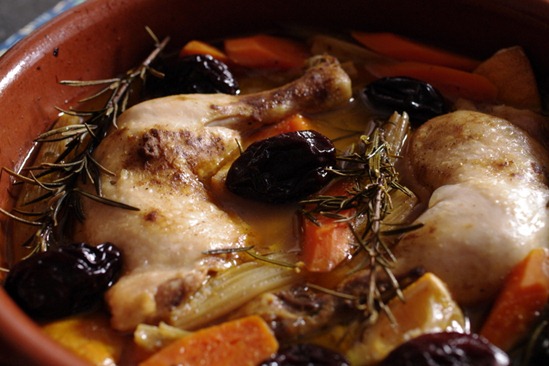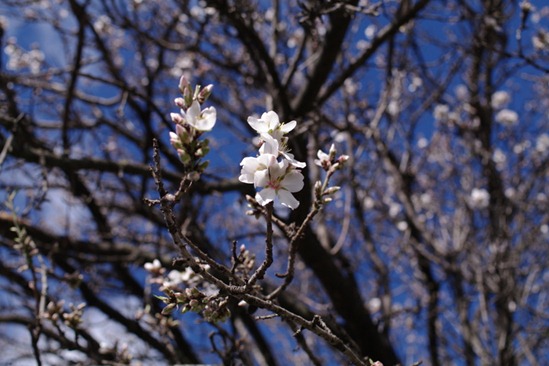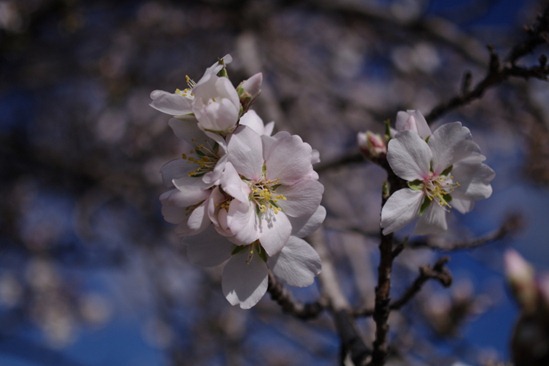Perhaps not authentic, but yesterday I wanted to make something that would cook while I was working, so I slow-cooked chicken pieces in an earthenware dish in the oven with a tagine spice mix of cinnamon, turmeric, paprika and cumin. It took about 5 minutes to prepare and a couple of hours later it was ready to eat.
I put the chicken pieces with olive oil in an earthenware dish, added three quartered echalottes, three large chopped cloves of garlic, two sliced carrots, half a lemon cut in quarters, some sprigs of rosemary, a little salt and a large spoonful of the tagine spices. I poured over the juice of the other half of the lemon and a cup of water, covered the dish with aluminium foil (a proper tagine pot would be ideal, but I haven’t got one) and put it in the oven at 150 C for a couple of hours. Half way through the cooking I added some pruneaux. We ate the tagine with basmati rice, although bulgur, couscous or flatbread would be more traditional.
Perfect for a winter evening!
It looks as though the weather is going to turn cold again, with freezing nights, grey cloud and snow forecast for the mountains. Snow here in the village is very rare – we had some a couple of years ago and it was the first time for fifty years – but we feel it in the wind when it falls on the mountains to the north. The signs of spring continue to appear, though, and today I noticed this almond tree starting to flower, a lot more buds about to open, and from high up in the tree came the sound of many bees already out and attracted by the blossom.



























